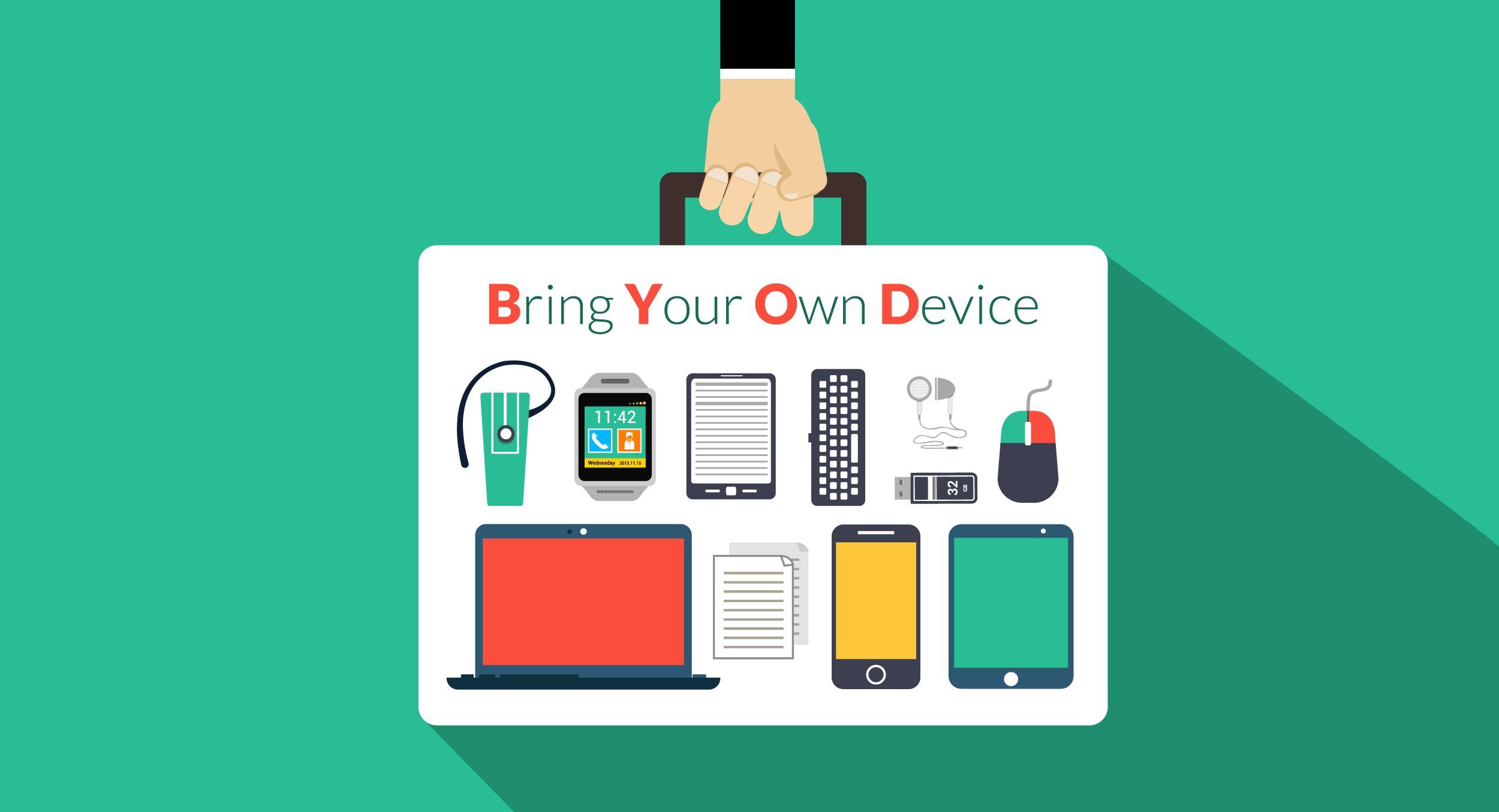
Advantages and Disadvantages of Implementing BYOD in Mobile Field Service
The BYOD (Bring-Your-Own-Device) culture is getting popular. About 67% of the North American workforce already embraces BYOD in some form. The worth of the enterprise mobility market, which sustains BYOD, will rise to $73.30 billion by 2021. This is a big jump from a worth of $35.10 billion in 2016.
Enterprises encourage BYOD for its promise of a cheaper and more flexible IT. But BYOD is a double-edged sword and may do more harm than good. Here are the pros and cons of BYOD, and how to implement it right to optimize your field services.
The Pros of BYOD
In an ideal world, BYOD offers a win-win proposition for employers and employees.
Enterprises encourage BYOD to save on hardware and training costs. BYOD shifts hardware and even data costs to the employee or field service technician. A familiar device eliminates the learning curve and negates the need for training. Technicians prefer to use the device they already love. Hence, implementing BYOD makes them happier as they know how to take full advantage of device features, thus improving their productivity. A Cisco study in the U.S. reveals workers save around 81 minutes per week on average, by using their own devices.
Upgrading enterprise IT faces various obstacles such as ROI concerns and conflicting priorities. But it is easier for individuals to upgrade to the latest smartphones. Employees who upgrade to new smartphones get to work with a fast, sleek device. Newer devices, capable of faster retrieval of information can improve the turnaround time. Devices with 4G LTE, Siri, and improved memory allow executives to leverage the full benefits of technology.
The proof of the pudding is in the eating. Enterprises implementing a BYOD strategy enjoy 46% service margins, while those without BYOD have only a 32% service margin. The 14% increase brought about by BYOD is a huge advantage.
The Cons of BYOD
BYOD is a double-edged sword. For every advantage, significant risks exist.
The biggest BYOD concern is security. Today’s enterprise IT struggles to secure the network from hackers and other cyber attacks. Such threats intensify when employees access enterprise applications through their devices. BYOD regulations stipulate the user to follow security protocols. Though authentication protocols and antivirus apps offer a modicum of security, such measures remain insufficient to counter the size of the threat. Enterprise IT can never be in total control over an employee’s phone/ devices.
A study by Harris Poll reveals that almost one out of every three people who use a personal laptop for work connects to the company’s network using Wi-Fi. The possibility of intrusion is very real through a wi-fi network. Hackers can break into individual smartphones by exploiting vulnerabilities in any installed app. Even without a hacker’s attempt, a careless employee losing his phone compromises enterprise security big time.
Another concern relates to privacy. Employees love to work from their own devices. But BYOD policies require employees to register their devices for monitoring. Most employees do not approve of their bosses having potential access to their personal information.
BYOD allows the enterprise to save on infrastructure costs. But this comes at the cost of non-standardized hardware. Some employees may upgrade to the latest iPhone, while others may still have a first-generation 3G phone with 1 GB RAM, or a laptop from 2009. Rolling out software compatible for everyone becomes a big challenge.
BYOD might create an uneven playing field. The employee with a superior device becomes more productive and successful. This creates resentment and de-motivates the have-nots.
Many employees have ordinary smartphones with maxed-out space. They cannot download the required security apps. Even if they do so, it may slow down their device or force them to remove some personal data. Hence, many employees reject BYOD simply because they resent subsidizing their employer profits.
Reconciling the Pros and Cons
The success of BYOD depends on developing a sound BYOD policy. The best policy is the one that maximizes the benefits of BYOD while offering effective solutions to the drawbacks.
The following security measures can be implemented to ensure the success of BYOD in Field Services:
- Block access to company systems through public WiFi
- Encrypt data transmitted to smartphones
- Passcode and biometric protect access to the field service app
- Store data in the cloud, and never on the employee’s device
- Seek out support options for each major platform
- Refer employees to the relevant support when problems arise
BYOD does not cut training altogether. Conduct awareness sessions to ensure employees can handle situations relating to their devices. Have an action plan to wipe the data in the eventuality of a lost or stolen device.
Engage the legal team to roll out a compliant BYOD policy. Some commercial licenses mandate installing the software only on business-owned devices. Some regulations restrict storing personal data at unsecured locations.
Finally, cultivate an atmosphere of trust. BYOD fails when the workforce perceives it as a way for the enterprise to save on infrastructure costs, or to spy on them. Incentivize employees who adopt BYOD. Subsidize their subscription and even the cost of the smartphone or wearable. It would still be cost-effective for the enterprise, compared to the enterprise buying a device for everyone and upgrading it every few years.
Aarathy
Aarathy is a Senior Digital Marketing Analyst at ReachOut Suite. She is majorly into content marketing and focuses on getting the messaging right across a host of marketing collaterals. While not working on content, you can find her juggling SEO, social media, branding and more. She enjoys exploring new frontiers in digital marketing and the associated challenges keep her going.
More posts by Aarathy